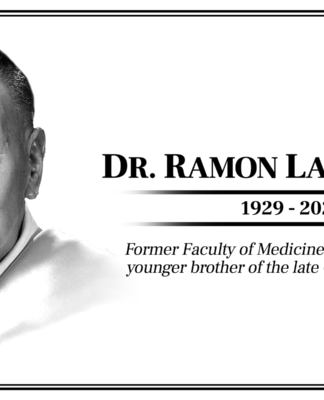THOMASIAN saints and blessed again have a place of honor on campus with the dedication of UST’s own “Carillon” last Nov. 22.
The structure at the new Martyr’s Monument Park is considered a “modern monument” because there are no statues or images of the Thomasians who became martyrs, said Fr. Rolando de la Rosa, O.P., Rector of UST.
“The bells are an appropriate symbol for martyrs because [they] always ring to send a message [and] to witness to something. It does not point to itself but to something else,” De la Rosa said.
The free-standing bell tower—built in honor of Thomasians martyred in Japan, Vietnam, and Spain—tune every hour, and rings a particular melody during noon and 6 p.m. to start the praying of the Angelus.
The Rector said a martyr is “someone who witnesses to his faith or belief; someone who embraces an ideal or a value which he is willing to live or die for.”
“As Christians, we become martyrs not necessarily by dying, but by living according to the tenets of our faith,” he said. “The life of a martyr points to Jesus, for whom he lives and dies.”
The Rector added that Christian martyrdom is “the most sublime form of witnessing to our faith,” and is inseparable with two things: “intense trials and suffering” and “living and dying for a noble or sublime purpose.”
Dedication
The bells at the left side of the monument are dedicated to Beato Manuel Moreno Martinez, O.P., Beato Jesus Villaverde Andres, O.P., San Pedro Almato, O.P., San Jeronimo Hermosilla, O.P., Sto. Domingo Henares, O.P., San Guillaume Courtet, O.P., Sto. Domingo Ibañez de Erquica, O.P., San Lorenzo Ruiz, and the Blessed Virgin Mary under her title Nuestra Señora del Rosario, while the bells at the right are dedicated to Santo Domingo de Guzman, the founder of the Order of Preachers, Santo Tomas de Aquino, O.P., patron of UST and all Catholic universities, San Antonio Gonzales, O.P., San Lucas del Espiritu Santo, O.P., Sto. Tomas Hioj Rokuzayemon Nishi de San Jacinto, O.P., San Jose Maria Diaz Sanjurjo, O.P., San Vicente Liem de la Paz, O.P., Beato Buenaventura Garcia Paredes, O.P., Beato Pedro Ibañez Alonso, O.P., and Beato Jose Maria Lopez Carillo, O.P.
Data on the Thomasian saints and martyrs were gathered by Fr. Fidel Villaroel, O.P., who had served as UST’s archivist for decades.
De la Rosa cited Fr. Guillaume Courtet, a Theology professor in the University from 1635 to 1636, whose life was representative of the lives of other Thomasian martyrs. He died, along with Lorenzo Ruiz, the first Filipino saint, after suffering from tortures in Japan.
On Sept. 27, 1637, Fr. Courtet was hung upside down for two days in a pit filled with human waste. Blood oozed from his nose, ears, eyes, and mouth, and he was later on beheaded.
People “in this secular and hedonistic world” are afraid to sacrifice unlike the martyrs of the past, De la Rosa said in his homily during the Mass for the dedication at the carillon. But he said people are martyrs everyday in terms of the suffering they experience from traffic, unpredictable weather, air pollution, the greed of corrupt politicians and businessmen, the loneliness and sadness being drowned by television and other forms of escape, and trouble and conflict within families and society.
“We are actually martyrs now, martyrs of our selfishness, neglect, irresponsibility, and refusal to decide. We are martyrs of compromises and of own need for survival,” De la Rosa said. “Do we have to continue living this kind of martyrdom? Wasting our life over useless and worthless things that enslave us?”
The Rector called on Thomasians to pray to UST and other Church martyrs to help them “embrace the sufferings that human life entails” and to “direct our life towards an ideal or value that is worth dying for.” D. J. Magturo
















